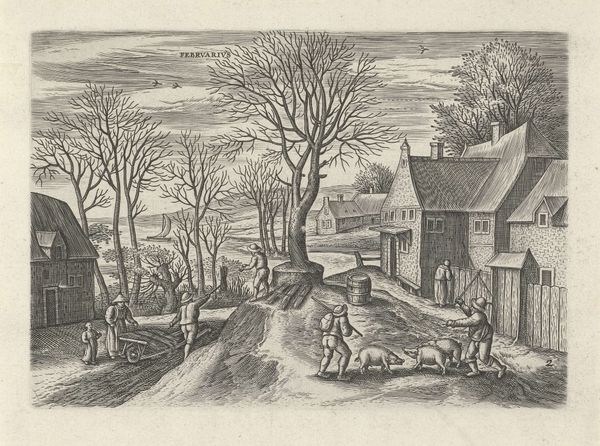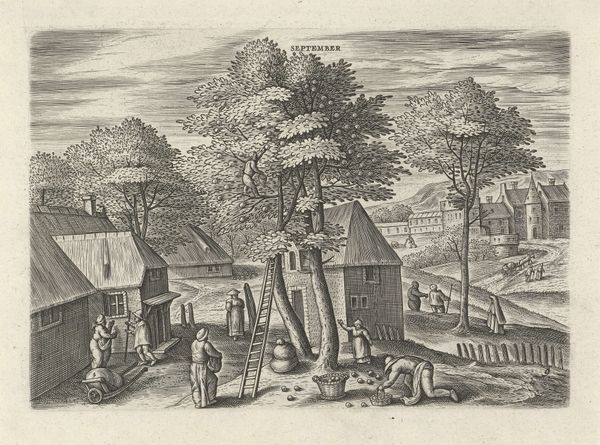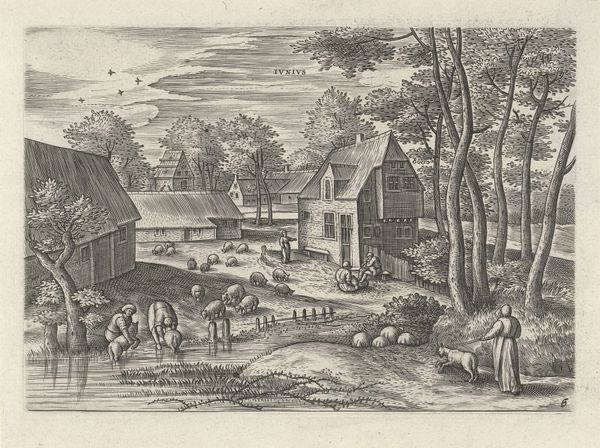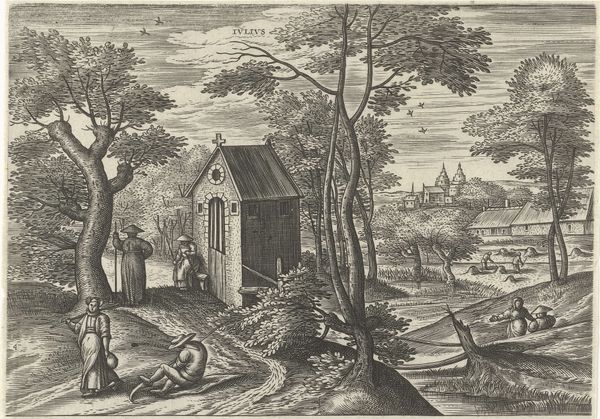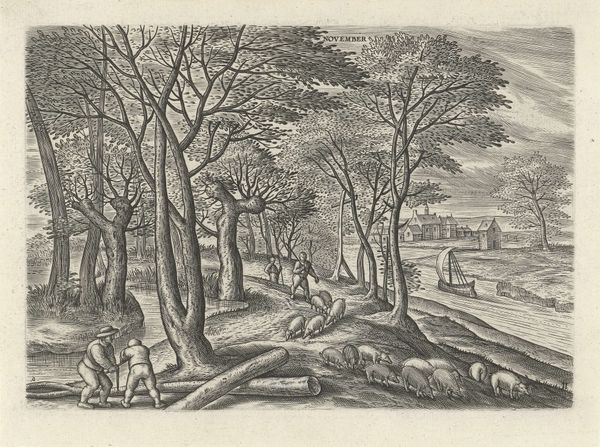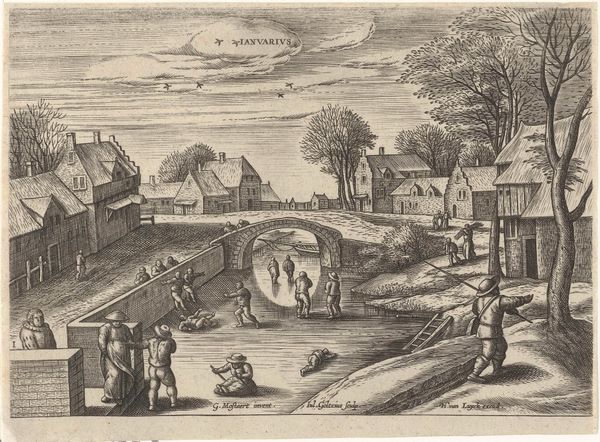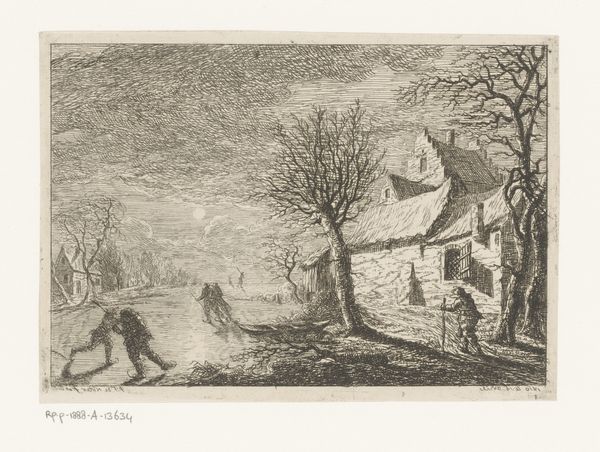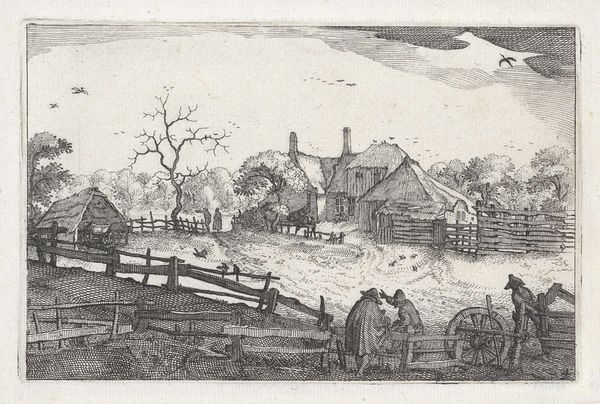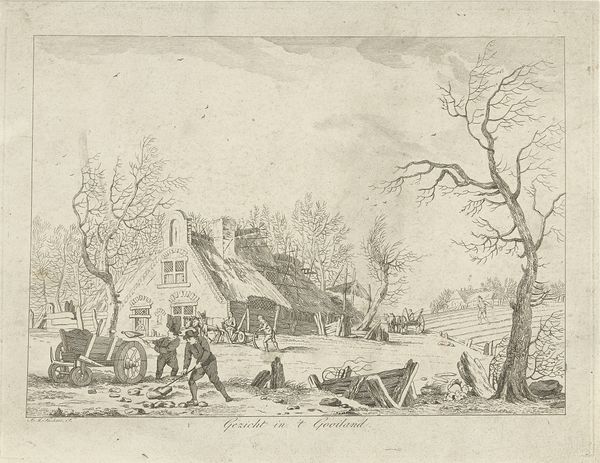
print, engraving
# print
#
old engraving style
#
landscape
#
figuration
#
line
#
cityscape
#
genre-painting
#
northern-renaissance
#
engraving
#
realism
Dimensions: width 169 mm, height 116 mm
Copyright: Rijks Museum: Open Domain
Curator: What we have here is a work entitled "December" from around 1560 to 1595, an engraving by Julius Goltzius. Editor: My first impression is a chilling one! There's a somber atmosphere created by the bare trees and muted tones, even with figures present. Curator: Exactly! The symbolic language around winter, especially within the context of Northern Renaissance art, spoke volumes about hardship and resilience. It's about more than just depicting a landscape; it's a commentary on the societal challenges faced, especially by the working class preparing for the scarcity and demands of the coming months. We see labor depicted: people cutting up what appears to be a butchered pig. These choices invite questions about how we distribute resources, who benefits from winter's bounty and who suffers disproportionately. Editor: And there is clear intent behind this particular moment depicted, using it as a symbolic representation of the month itself. Think about the Roman god Saturn, sometimes associated with December in earlier traditions. This image reflects labor connected to both survival and sustenance as cultural and spiritual symbols for understanding the finality associated with this time of year and cycle. Curator: Absolutely, though unlike Saturn, the emphasis here isn't divine, but rather firmly planted within a working class context. These aren't abstract virtues or vices, but a depiction of a lived experience for the contemporary viewer. This image then might be viewed as advocating for the common worker, emphasizing that community thrives in hardship. The dog at the forefront becomes part of the same symbolism, another mouth to feed depending on the actions taken in the scene. Editor: Yes, the engraving's focus, as well as details like the city in the background or how people huddle together, become potent carriers of that story through cultural and religious symbols, shaping both individual and communal experiences across generations. This isn't just a snapshot; it’s a meditation on the symbolic burden December carried, a burden visualized so meticulously. Curator: And that is important, allowing for a critical lens when considering the legacies that continue to shape our understanding of seasonality and resource distribution today. Editor: Indeed, thinking of symbolism, what is memorialized in art shifts how societies come to understand and process these themes through generations.
Comments
No comments
Be the first to comment and join the conversation on the ultimate creative platform.
